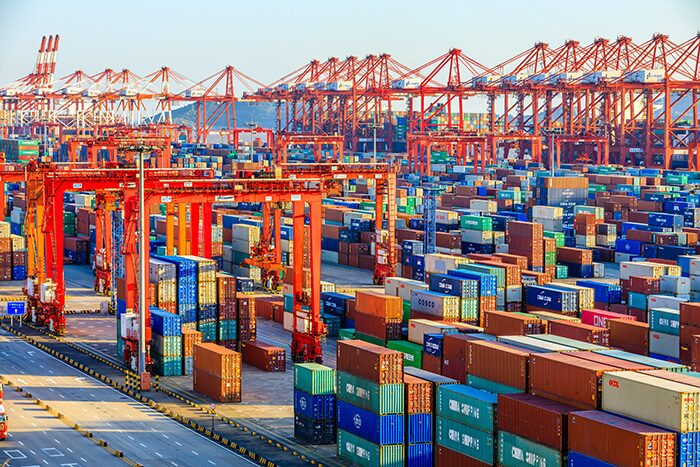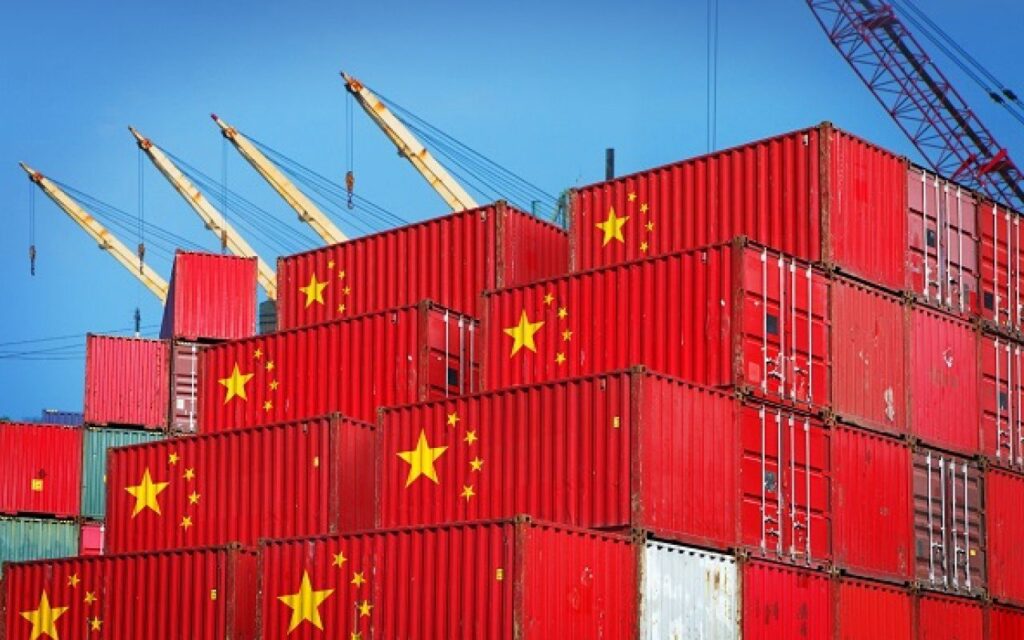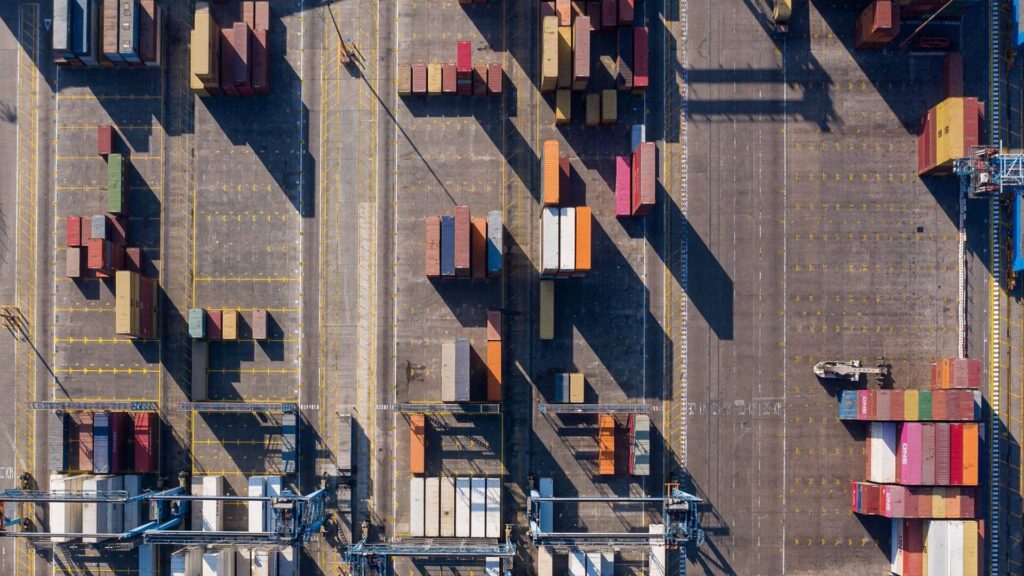Transshipment is the process of transferring cargo from one vessel to another at an intermediate port or hub. It is a common practice in international trade, especially when there is no direct connection between the origin and the destination of the goods. Transshipment hubs play a vital role in facilitating global trade, as they offer cost savings, flexibility, and efficiency to shippers and carriers.
China is one of the world’s largest transshipment markets, with a network of ports that handle a significant share of global container traffic. China’s transshipment industry has grown rapidly in recent years, driven by the country’s economic development, trade expansion, and infrastructure investment. China’s transshipment hubs offer various advantages and challenges to the shipping industry, and have a significant impact on global trade patterns and dynamics.
The Importance of Transshipment Hubs in Global Trade

Transshipment hubs are strategic locations that serve as intermediaries between different regions and markets in global trade. They enable the movement of goods across different modes of transport, such as sea, air, rail, and road. Transshipment hubs also allow the consolidation and distribution of cargo, as well as the optimization of vessel utilization and routing.
Transshipment hubs offer several benefits to the shipping industry and the global economy, such as:
- Reducing transportation costs and time: Transshipment hubs can lower the transportation costs and time for shippers and carriers, by enabling them to use larger and more efficient vessels on long-haul routes, and smaller and more flexible vessels on short-haul routes. Transshipment hubs can also reduce the number of port calls and the distance traveled by vessels, thus saving fuel and emissions.
- Enhancing connectivity and accessibility: Transshipment hubs can enhance the connectivity and accessibility of different regions and markets, by providing more options and frequencies for cargo movement. Transshipment hubs can also increase the competitiveness and attractiveness of ports, by attracting more cargo volume and value-added services.
- Improving service quality and reliability: Transshipment hubs can improve the service quality and reliability of the shipping industry, by offering more flexibility and resilience to cope with demand fluctuations, market changes, and operational disruptions. Transshipment hubs can also provide better visibility and control over the cargo flow, by using advanced technologies and systems.
Overview of Key Players in China’s Transshipment Industry

China is one of the world’s largest transshipment markets, accounting for about 20% of the global container transshipment volume in 2019. China’s transshipment industry is dominated by a few key players, namely:
- Hong Kong: Hong Kong is the world’s largest transshipment hub, handling about 18 million TEUs (twenty-foot equivalent units) of transshipment containers in 2019. Hong Kong serves as a gateway to mainland China and a hub for intra-Asia trade, connecting over 200 ports in 70 countries. Hong Kong’s transshipment industry is supported by its strategic location, deep-water harbor, modern facilities, efficient services, and free port status.
- Shanghai: Shanghai is the world’s busiest container port, handling about 43.3 million TEUs of total container throughput in 2019. Shanghai’s transshipment volume reached about 10.5 million TEUs in 2019, accounting for about 24% of its total throughput. Shanghai serves as a hub for China’s coastal and riverine trade, as well as a gateway to the Yangtze River Delta region, one of the most dynamic and prosperous areas in China. Shanghai’s transshipment industry is supported by its large domestic market, extensive hinterland, comprehensive facilities, and ambitious development plans.
- Shenzhen: Shenzhen is the world’s third-busiest container port, handling about 27.7 million TEUs of total container throughput in 2019. Shenzhen’s transshipment volume reached about 8.5 million TEUs in 2019, accounting for about 31% of its total throughput. Shenzhen serves as a hub for China’s export-oriented trade, as well as a gateway to the Pearl River Delta region, one of the most industrialized and urbanized areas in China. Shenzhen’s transshipment industry is supported by its proximity to Hong Kong, strong manufacturing base, diversified port cluster, and innovative policies.
Major Transshipment Routes in China

China’s transshipment industry is characterized by a complex and dynamic network of routes, involving both domestic and international trade flows. Some of the major transshipment routes in China are:
- North-South Route: This route connects the ports in northern China, such as Tianjin, Qingdao, and Dalian, with the ports in southern China, such as Hong Kong, Shenzhen, and Guangzhou. This route mainly handles domestic trade, as well as some international trade with Southeast Asia, Africa, and Latin America. This route is influenced by the regional disparities in China’s economic development, as well as the seasonal variations in cargo demand.
- East-West Route: This route connects the ports in eastern China, such as Shanghai, Ningbo, and Xiamen, with the ports in western China, such as Chongqing, Chengdu, and Kunming. This route mainly handles domestic trade, as well as some international trade with Europe, the Middle East, and South Asia. This route is influenced by the Belt and Road Initiative, a strategic plan to enhance China’s connectivity and cooperation with Eurasia, as well as the development of China’s inland and western regions.
- Intra-Asia Route: This route connects the ports in China with the ports in other Asian countries, such as Japan, Korea, Taiwan, Vietnam, Thailand, and Singapore. This route mainly handles international trade, as well as some domestic trade with China’s coastal and island provinces. This route is influenced by the growth of intra-Asia trade, the largest and fastest-growing trade region in the world, as well as the integration of the Asian economies and markets.
Infrastructure and Facilities in China’s Transshipment Hubs

China’s transshipment hubs are equipped with advanced and modern infrastructure and facilities, to cope with the increasing volume and complexity of transshipment operations. Some of the infrastructure and facilities in China’s transshipment hubs are:
- Berths and Quays: China’s transshipment hubs have a large number of berths and quays, ranging from 20 to 50 per port, to accommodate different types and sizes of vessels. The berths and quays are designed to handle large and heavy containers, as well as to facilitate efficient loading and unloading operations. The berths and quays are also equipped with various utilities and services, such as electricity, water, communication, and security.
- Cranes and Equipment: China’s transshipment hubs have a large number of cranes and equipment, ranging from 50 to 200 per port, to handle different types and quantities of containers. The cranes and equipment include gantry cranes, rail-mounted cranes, rubber-tired cranes, reach stackers, forklifts, and trailers. The cranes and equipment are designed to operate at high speed and accuracy, as well as to reduce noise and emissions.
- Yards and Warehouses: China’s transshipment hubs have a large area of yards and warehouses, ranging from 100 to 500 hectares per port, to store and manage different types and categories of containers. The yards and warehouses include stacking areas, sorting areas, inspection areas, and bonded areas. The yards and warehouses are designed to optimize the space and layout, as well as to enhance the visibility and security of the containers.
- Terminals and Systems: China’s transshipment hubs have a large number of terminals and systems, ranging from 5 to 20 per port, to coordinate and control different aspects and stages of transshipment operations. The terminals and systems include container terminals, intermodal terminals, information systems, and communication systems. The terminals and systems are designed to integrate and automate the processes and functions, as well as to improve the service quality and reliability of the transshipment operations.
Advantages and Challenges of Using China’s Hubs
China’s transshipment hubs offer various advantages and challenges to the shipping industry, depending on the specific needs and preferences of the shippers and carriers. Some of the advantages and challenges of using China’s transshipment hubs are:
- Advantages:
- Cost savings: China’s transshipment hubs can offer cost savings to shippers and carriers, by enabling them to use larger and more efficient vessels on long-haul routes, and smaller and more flexible vessels on short-haul routes. China’s transshipment hubs can also offer competitive tariffs and fees, as well as various incentives and subsidies, to attract more cargo volume and value-added services.
- Connectivity and accessibility: China’s transshipment hubs can offer connectivity and accessibility to shippers and carriers, by providing more options and frequencies for cargo movement. China’s transshipment hubs can also offer access to China’s large and growing domestic market, as well as to other emerging and potential markets in Asia and beyond.
- Service quality and reliability: China’s transshipment hubs can offer service quality and reliability to shippers and carriers.
Impact of Transshipment Industry on Global Trade
China’s transshipment industry has a significant impact on global trade, as it affects the trade volume, value, structure, and patterns of different regions and markets. Some of the impacts of China’s transshipment industry on global trade are:
- Increasing trade volume and value: China’s transshipment hubs can increase the trade volume and value of global trade, by enabling more cargo movement and exchange between different regions and markets. China’s transshipment hubs can also increase the trade volume and value of China’s trade, by facilitating its export-oriented and import-dependent trade, as well as its domestic and regional trade.
- Changing trade structure and composition: China’s transshipment hubs can change the trade structure and composition of global trade, by influencing the types and categories of goods that are traded. China’s transshipment hubs can also change the trade structure and composition of China’s trade, by diversifying its trade partners and products, as well as its trade modes and routes.
- Shaping trade patterns and dynamics: China’s transshipment hubs can shape the trade patterns and dynamics of global trade, by affecting the supply and demand, prices and costs, and competition and cooperation of different regions and markets. China’s transshipment hubs can also shape the trade patterns and dynamics of China’s trade, by adapting to the changes and challenges in the global and regional trade environment, as well as the opportunities and potentials in the domestic and local trade development.
Future Trends and Developments in China’s Transshipment Hubs

China’s transshipment industry is facing various trends and developments that will shape its future prospects and challenges. Some of the future trends and developments in China’s transshipment hubs are:
- Digitalization and automation: China’s transshipment hubs are embracing digitalization and automation, by using technologies such as artificial intelligence, big data, blockchain, and internet of things, to enhance their efficiency, productivity, and competitiveness. Digitalization and automation can also improve the service quality and reliability, as well as the visibility and security of China’s transshipment operations.
- Green and sustainable: China’s transshipment hubs are pursuing green and sustainable development, by adopting measures such as energy saving, emission reduction, waste management, and environmental protection, to reduce their environmental impact and carbon footprint. Green and sustainable development can also increase the social responsibility and reputation, as well as the innovation and resilience of China’s transshipment industry.
- Integration and cooperation: China’s transshipment hubs are enhancing integration and cooperation, by participating in initiatives such as the Belt and Road Initiative, the Regional Comprehensive Economic Partnership, and the China-EU Connectivity Platform, to expand their connectivity and accessibility with other regions and markets. Integration and cooperation can also foster the mutual benefit and win-win situation, as well as the stability and harmony of China’s transshipment industry.





